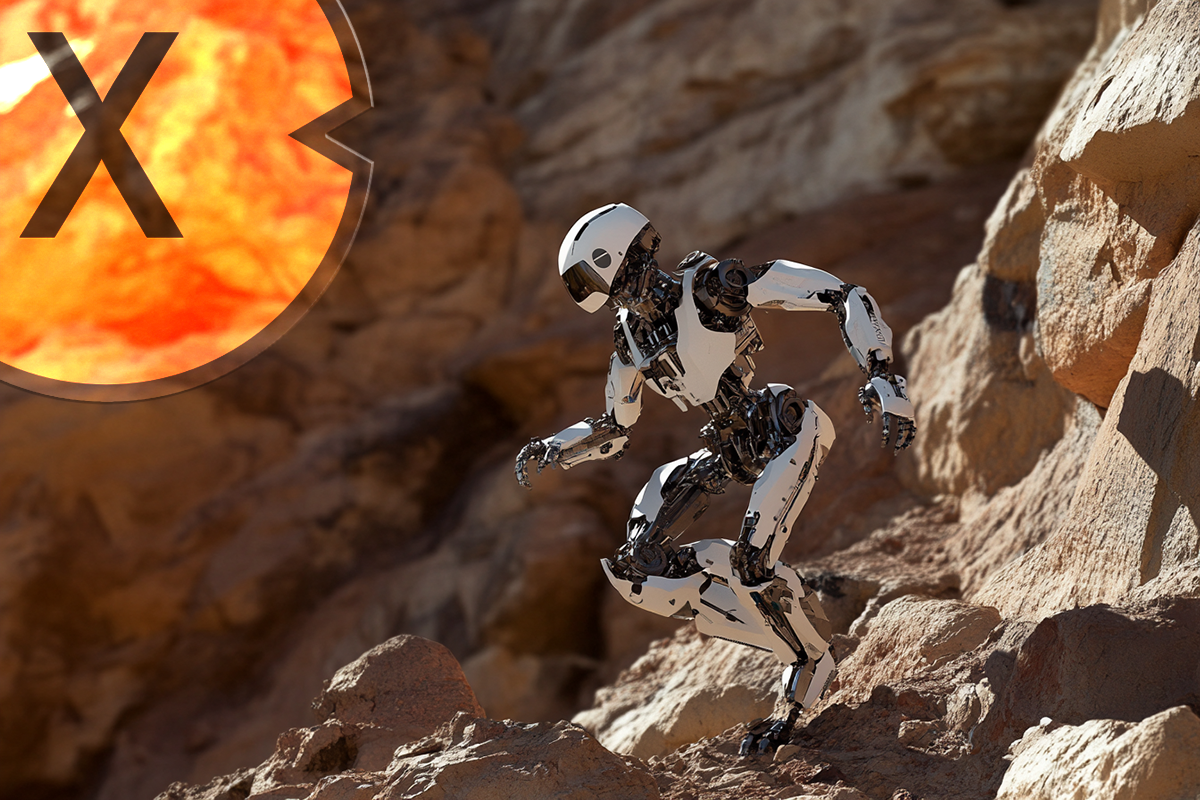
The top ten of the most famous and famous humanoid robots: from Atlas, Sophia, Ameca, Digit, GR-1 to Phoenix to Optimus - creative image: Xpert.Digital
The top 10 or 12 most well-known and famous humanoid robots
There are numerous well-known humanoid robots that have garnered worldwide attention due to their advanced capabilities and diverse applications. Here are some of the most remarkable humanoid robots:
1. Atlas (Boston Dynamics)
Atlas is one of the best-known humanoid robots and was developed by Boston Dynamics. It is particularly known for its impressive agility and dynamism. Atlas can perform complex movements such as backflips, parkour, and lifting heavy loads. Originally designed for search and rescue missions, Atlas now serves as a platform for exploring the frontiers of humanoid robotics.
2. Sophia (Hanson Robotics)
Sophia is one of the world's most famous humanoid robots, developed by Hanson Robotics. Unveiled in 2016, she is known for her human-like appearance and her ability to converse and recognize emotions. Sophia gained international fame when she was granted Saudi Arabian citizenship – a first in the history of robotics. She is frequently featured at conferences and in media appearances, where she discusses artificial intelligence and the future of humanity.
3. Ameca (Engineered Arts)
Ameca is considered one of the most advanced humanoid robots in terms of facial expressions and human interaction. Developed by Engineered Arts, Ameca is equipped with advanced sensors that allow it to recognize human emotions and engage in natural conversations. Ameca is often used as a platform for developing AI systems and impresses with its realistic facial expressions.
4. Digit (Agility Robotics)
Digit is a humanoid robot specifically designed for logistical tasks. With its two legs, it can move dynamically in human-like environments. Agility Robotics recently partnered with Amazon to deploy Digit in warehouses, where it will perform repetitive tasks such as moving boxes. Digit is particularly known for its ability to operate in environments originally designed for humans.
5. GR-1 (Fourier Intelligence)
GR-1 is a humanoid robot from the Chinese company Fourier Intelligence, specifically designed for the healthcare sector. Standing 1.64 meters tall and weighing 55 kilograms, GR-1 is intended to assist in the care of the elderly by performing everyday tasks and repositioning patients. Developed as a response to the labor shortage in the healthcare sector, this robot could play a vital role in care facilities in the future.
6. Phoenix (Sanctuary AI)
Phoenix is a humanoid robot from the Canadian company Sanctuary AI, designed to perform industrial tasks. Equipped with the Carbon AI control system, Phoenix is said to possess human-like intelligence and be capable of carrying loads of up to 25 kilograms and performing various industrial activities. Phoenix represents a new generation of robots capable of handling both physical and cognitive tasks.
7. Optimus (Tesla)
Optimus is a humanoid robot from Tesla, unveiled in 2022. Tesla plans to use Optimus for simple manual tasks such as lifting objects or working in factories. The robot is still in the early stages of development, but Tesla founder Elon Musk sees great potential in using Optimus in many areas of daily life.
8. ARMAR-6 (Karlsruhe Institute of Technology)
ARMAR-6, developed by the Karlsruhe Institute of Technology (KIT), is a humanoid robot for industrial applications. It can use tools such as drills and hammers and perform simple maintenance tasks. ARMAR-6 possesses artificial intelligence that allows it to grasp objects and hand tools to human colleagues when needed.
9. Walker (UBTECH Robotics)
Walker is a humanoid service robot from the Chinese company UBTECH Robotics. It can navigate autonomously, climb stairs, and even balance on one leg. Marketed as a household robot, Walker can perform simple tasks such as serving tea or vacuuming. Its ability to interact with people makes it particularly interesting for use in private homes.
10. NAO (SoftBank Robotics)
NAO is a small humanoid robot from SoftBank Robotics, primarily used in educational settings. Standing approximately 60 cm tall, NAO is equipped with cameras for object recognition and microphones for multilingual speech interaction. NAO is often used to teach children programming skills or as an assistant in hospitals.
11. Pepper (SoftBank Robotics)
Pepper is also a well-known humanoid robot from SoftBank Robotics, designed to recognize and respond to human emotions. Since its launch in 2014, Pepper has been deployed in various settings, including retail, educational institutions, and nursing homes. While not as agile as some other humanoid robots, Pepper excels in its ability to interact with people on an emotional level.
12. Jia Jia (University of Science and Technology of China)
Jia Jia is considered China's first humanoid robot and was developed at the University of Science and Technology of China. It can hold simple conversations and display various facial expressions. Jia Jia impresses with its realistic eye and lip movements and its human-like appearance.
The diversity of humanoid robots
The world of humanoid robots is constantly expanding, with new developments emerging in various fields such as industry, healthcare, and entertainment. While some of these robots, like Atlas, stand out for their impressive agility, others, like Sophia or Pepper, are known for their social interaction capabilities. The diversity of these technologies demonstrates the enormous potential of robots in our daily lives – whether for assisting with physical tasks or enhancing social interactions.
More about it here:
